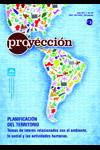View Item
- xmlui.general.dspace_homeCentros Regionales y EEAsCentro Regional Patagonia NorteEEA BarilocheArtículos científicosxmlui.ArtifactBrowser.ItemViewer.trail
- DSpace Home
- Centros Regionales y EEAs
- Centro Regional Patagonia Norte
- EEA Bariloche
- Artículos científicos
- View Item
El rol de los actores institucionales vinculados a la gestión ambiental y de infraestructura en la región norpatagónica argentino-chilena. Un aporte a las discusiones sobre el desarrollo regional
Abstract
La región norpatagónica históricamente fue protagonista de procesos conjuntos a ambos lados de la cordillera de Los Andes. Más allá de la presencia de diferentes visiones y objetivos específicos, se plantea en la actualidad una nueva mirada binacional que conlleva la posibilidad y la práctica de acuerdos y decisiones compartidas. Éstas debieran favorecer la potencialidad de la región, evitando aspectos adversos e indeseados, reduciendo los impactos
[ver mas...]
La región norpatagónica históricamente fue protagonista de procesos conjuntos a ambos lados de la cordillera de Los Andes. Más allá de la presencia de diferentes visiones y objetivos específicos, se plantea en la actualidad una nueva mirada binacional que conlleva la posibilidad y la práctica de acuerdos y decisiones compartidas. Éstas debieran favorecer la potencialidad de la región, evitando aspectos adversos e indeseados, reduciendo los impactos ambientales negativos y dando lugar a una región transnacional con continuidad y coherencia en relación a ciertos aspectos vinculados directamente con la población involucrada, como serían los relacionados a migraciones, comercio y turismo entre otros. Una de estas iniciativas son los corredores bioceánicos, que pueden ser entendidos como ejes de integración.
En esta contribución se presentan algunos de los actores en norpatagonia, sus enfoques, interacciones e intereses en un mismo espacio, intentando comprender en qué medida responden a las necesidades de la región. Entre dichos actores caben mencionar a Parques Nacionales, el Corredor Binacional Norpatagónico, la Reserva de la Biosfera y el Plan “Integración de la Infraestructura Regional en Sur América”
[Cerrar]
The North Patagonian region was historically protagonist of joint processes on both sides of Los Andes mountain range. Beyond the presence of various visions and specific objectives, now a new bi-national look arises which leads to the possibility and the practice of shared agreements and decisions. They should promote the potential of the region, avoiding adverse and unwanted aspects, reducing the negative environmental impacts and giving rise to a
[ver mas...]
The North Patagonian region was historically protagonist of joint processes on both sides of Los Andes mountain range. Beyond the presence of various visions and specific objectives, now a new bi-national look arises which leads to the possibility and the practice of shared agreements and decisions. They should promote the potential of the region, avoiding adverse and unwanted aspects, reducing the negative environmental impacts and giving rise to a transnational region with continuity and consistency in relation to certain aspects directly linked with the population involved, as would be those related to migrations, trade and tourism among others. One of these initiatives is the bioceanic corridors, that can be understood as integration axis. In this contribution we present some of the actors in northern Patagonia, their approaches, interactions, and interests in one place, trying to understand the extent to which they respond to the needs of the region. Among these actors we it fits to mention National Parks, the North Patagonian Binational Corridor, the Biosphere Reserve and the Plan "Integration of Regional Infrastructure in South America".
[Cerrar]

Author
Fuente
Proyección 14 : 21-47 (Junio 2013)
Date
2013
Editorial
Instituto CIFOT
ISSN
1852-0006
Formato
pdf
Tipo de documento
artículo
Palabras Claves
Derechos de acceso
Abierto
 Excepto donde se diga explicitamente, este item se publica bajo la siguiente descripción: Creative Commons Attribution-NonCommercial-ShareAlike 2.5 Unported (CC BY-NC-SA 2.5)
Excepto donde se diga explicitamente, este item se publica bajo la siguiente descripción: Creative Commons Attribution-NonCommercial-ShareAlike 2.5 Unported (CC BY-NC-SA 2.5)


